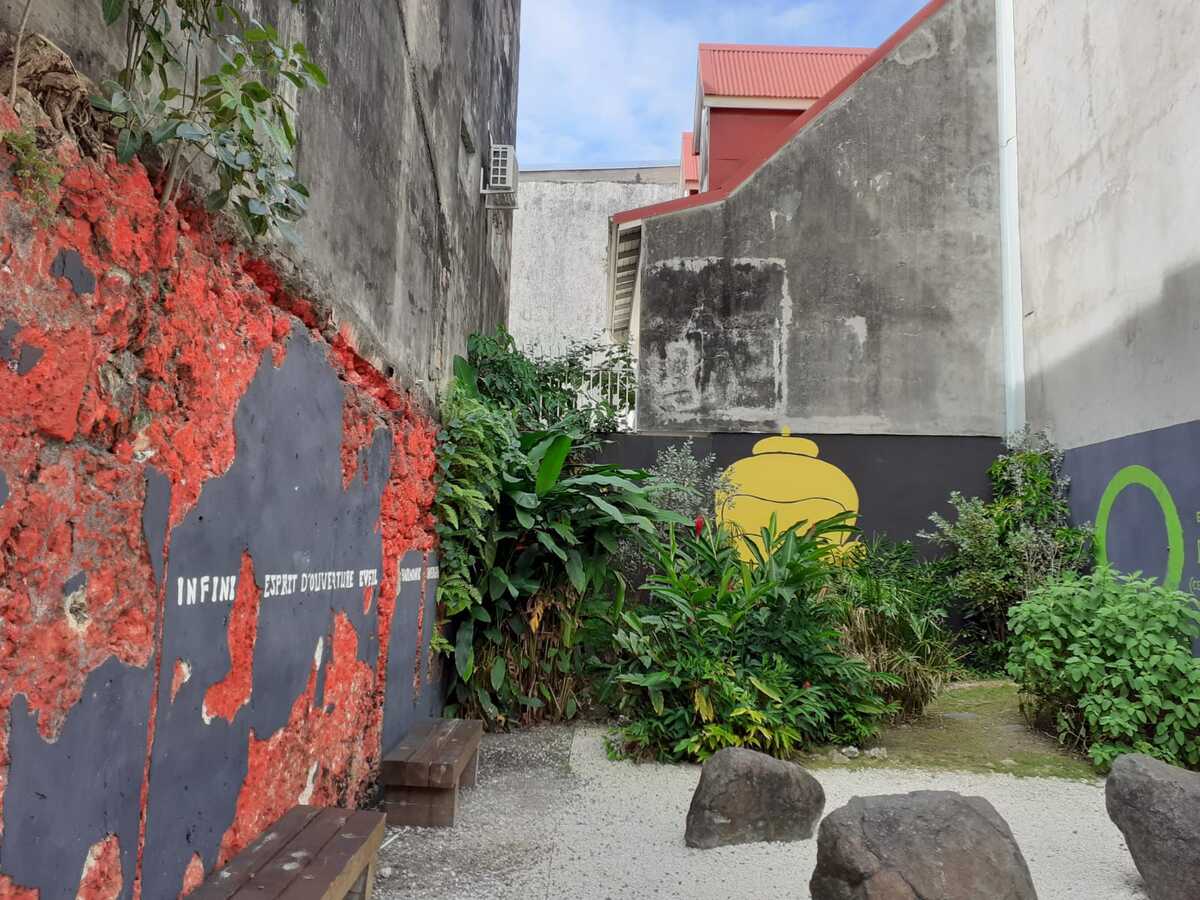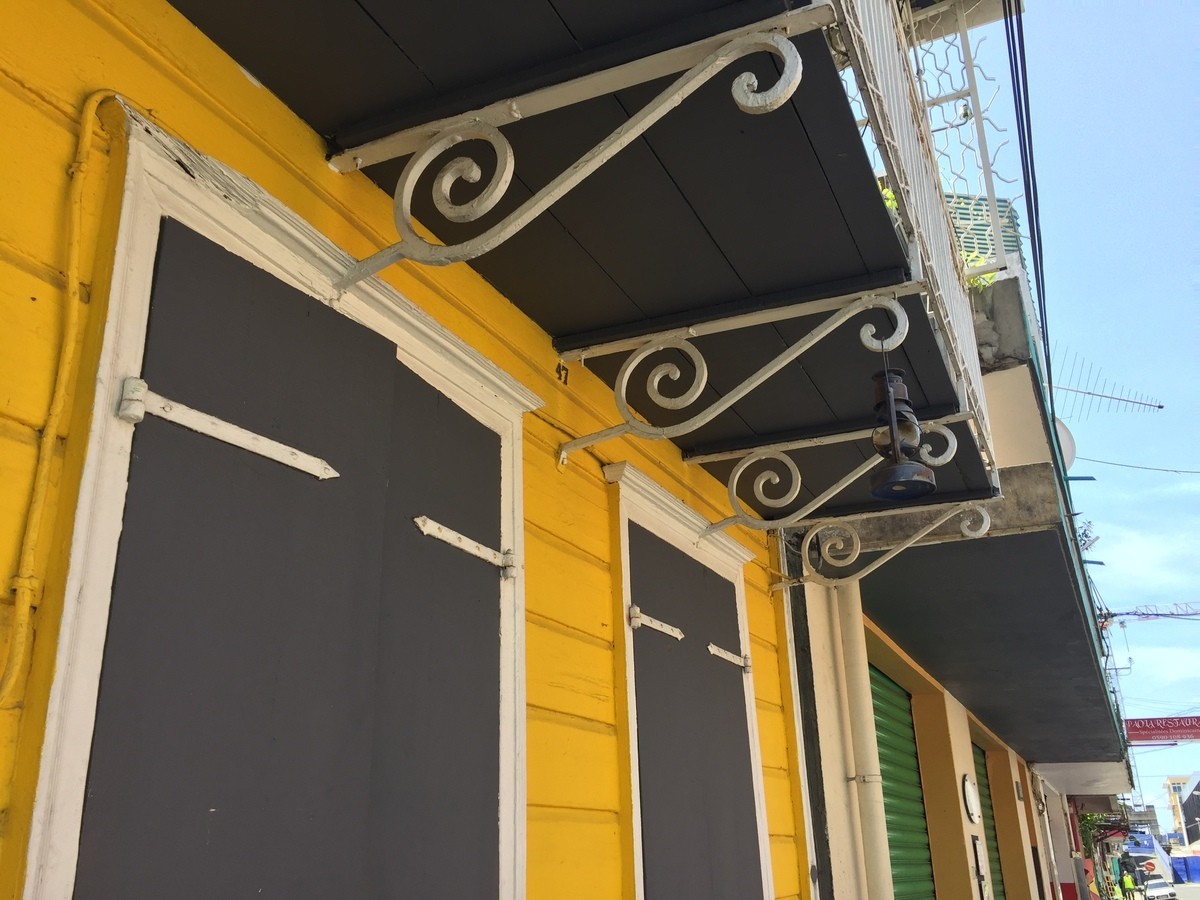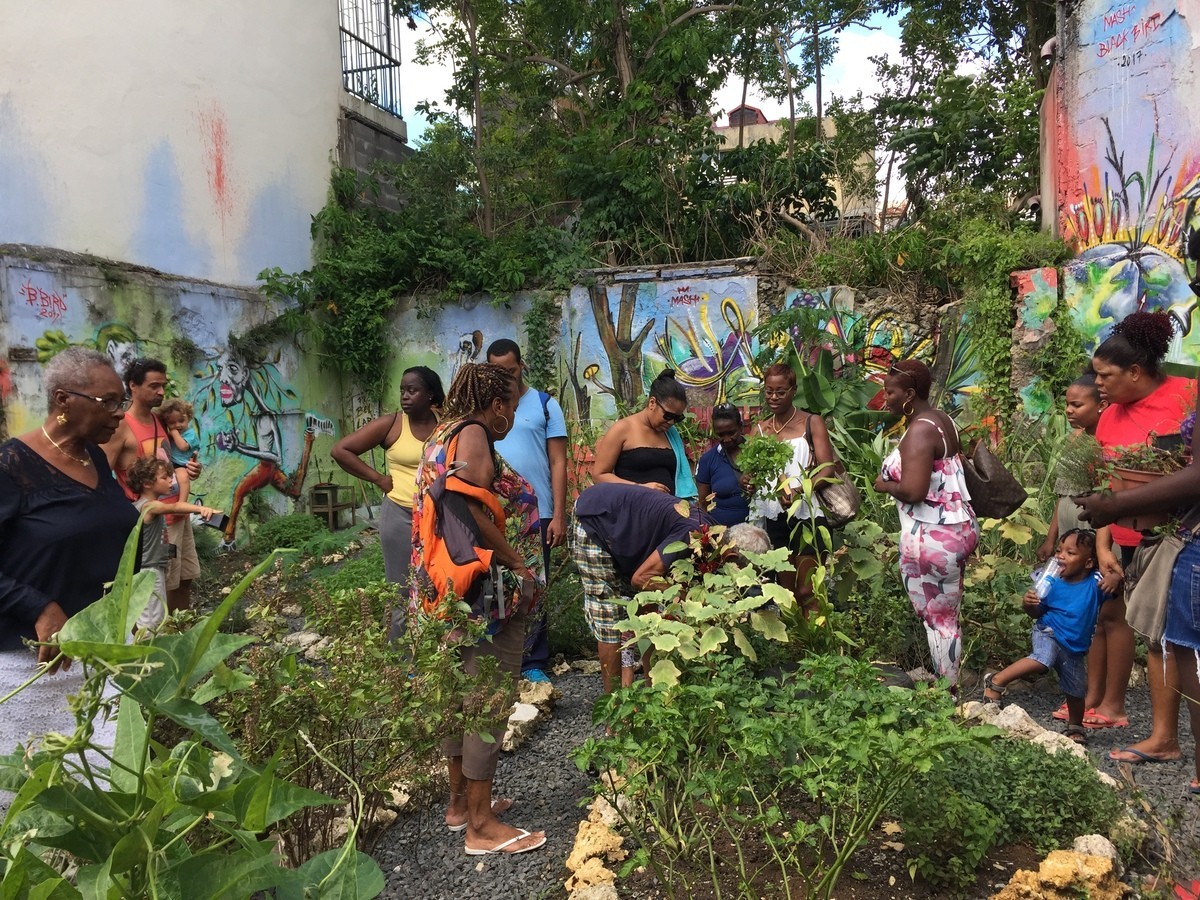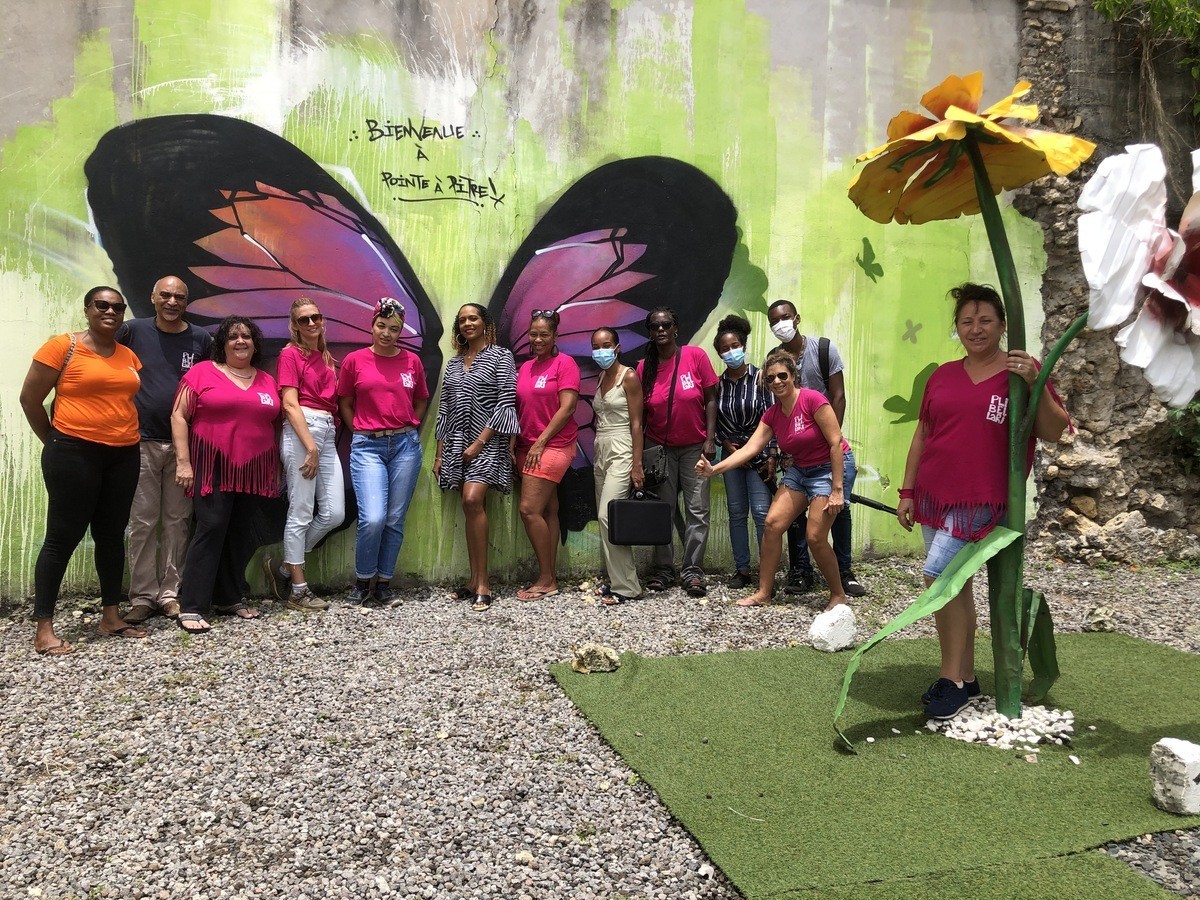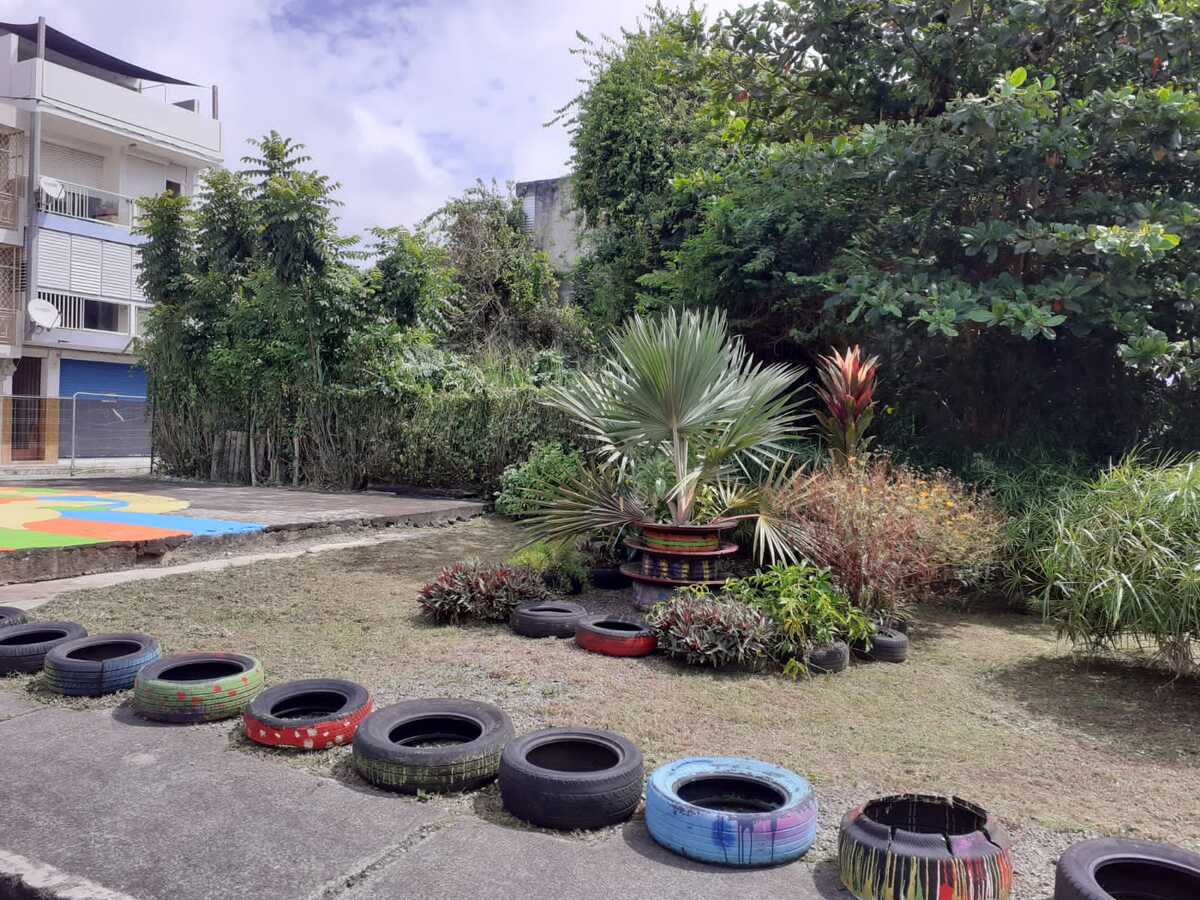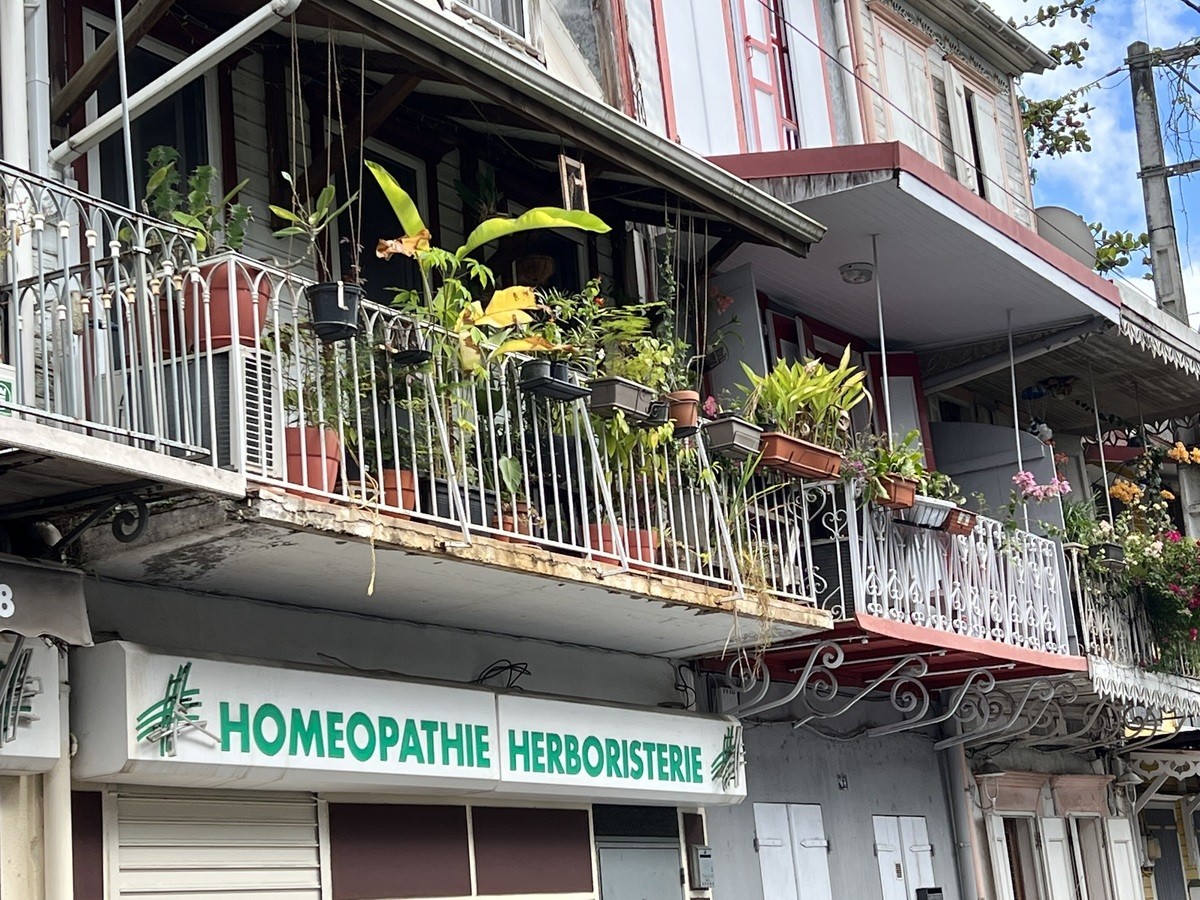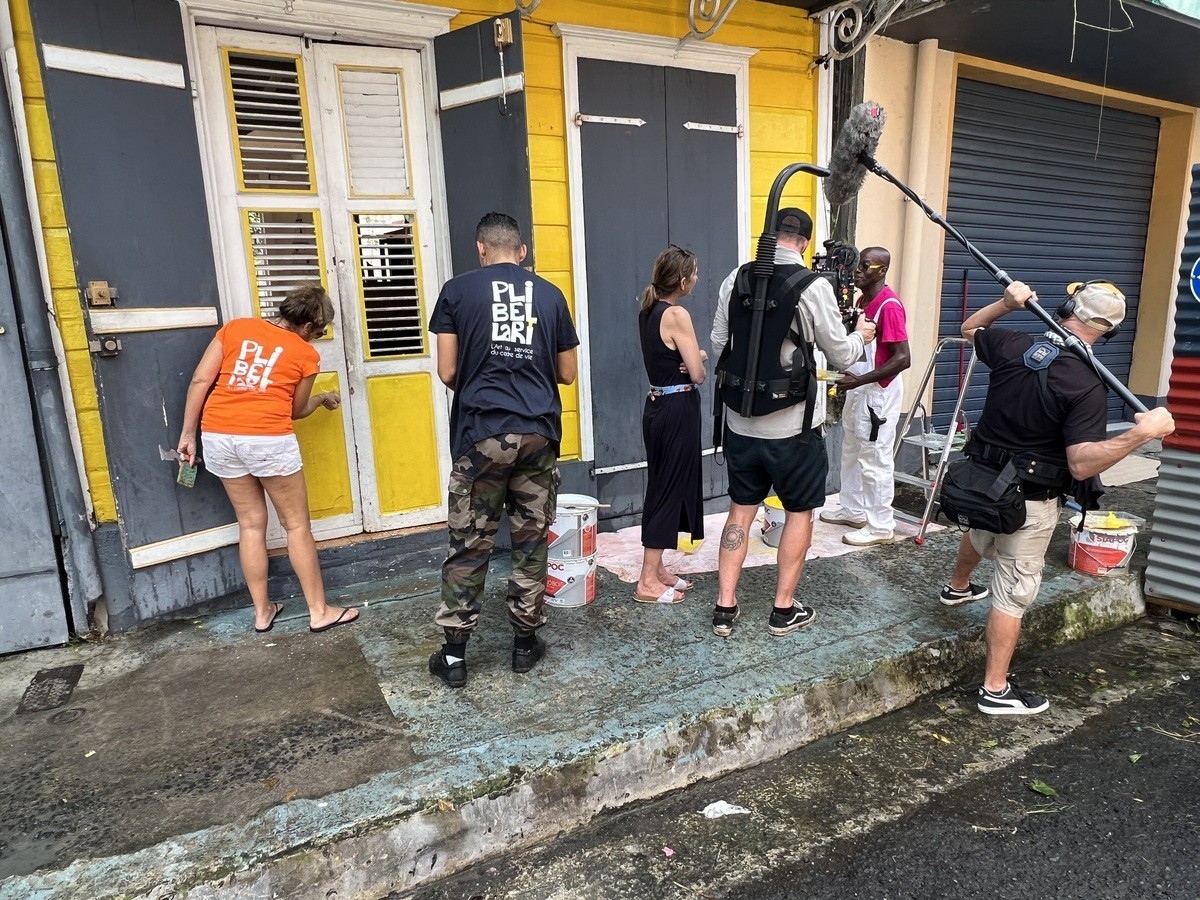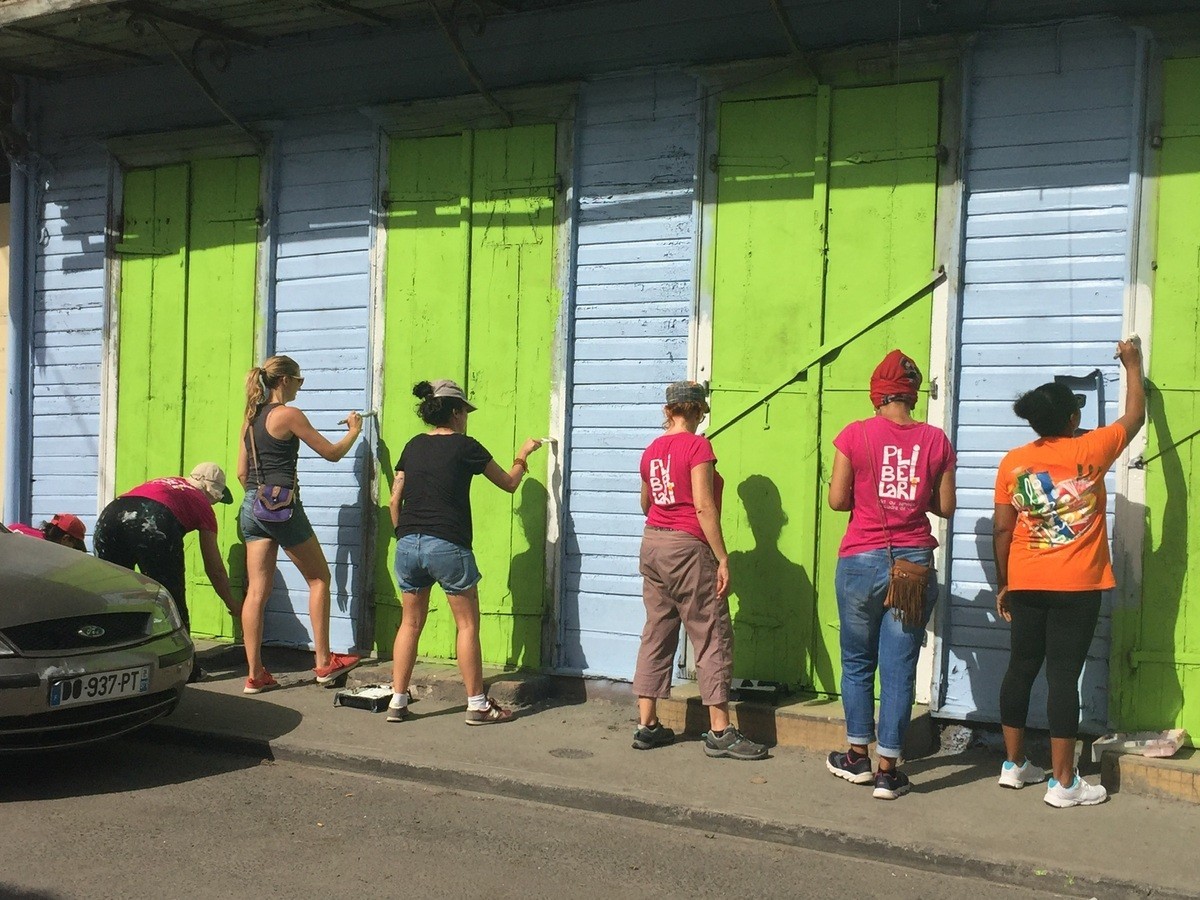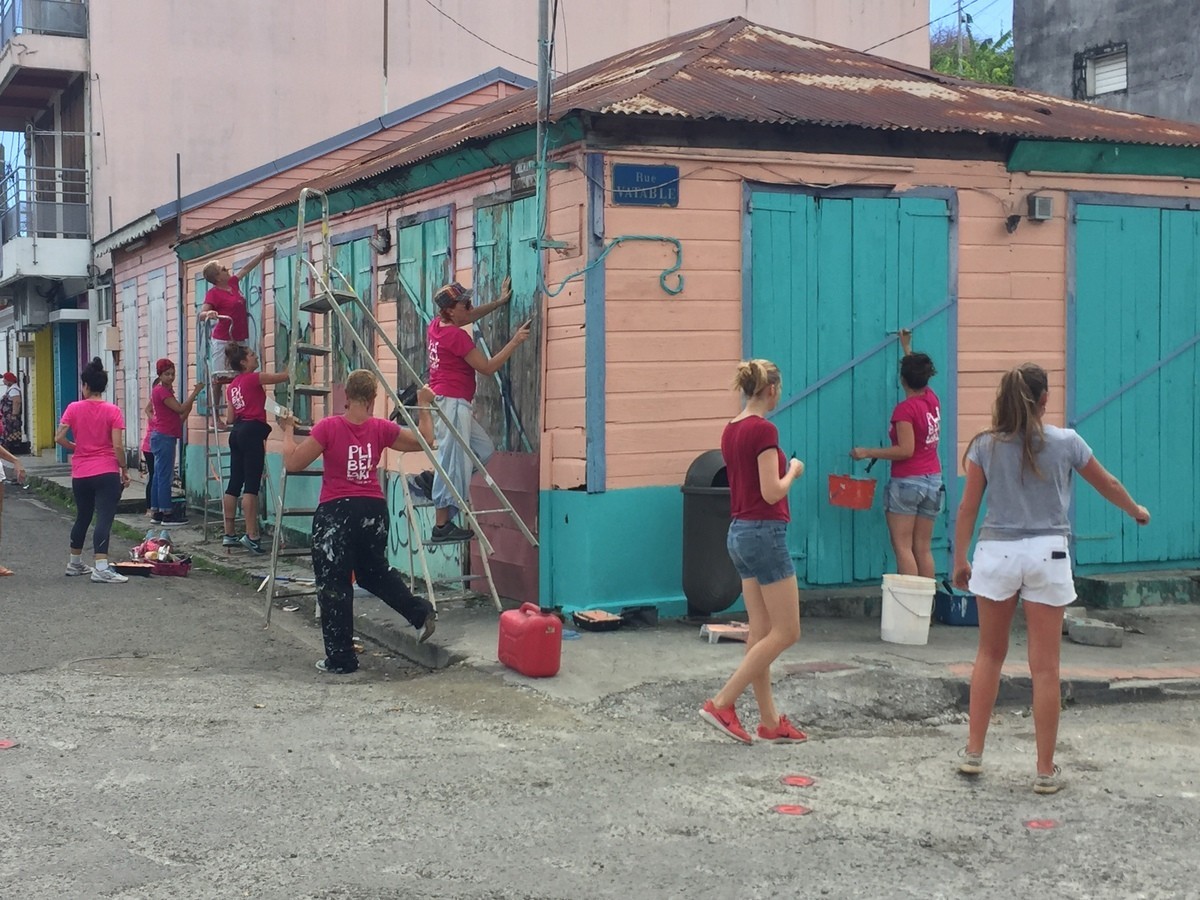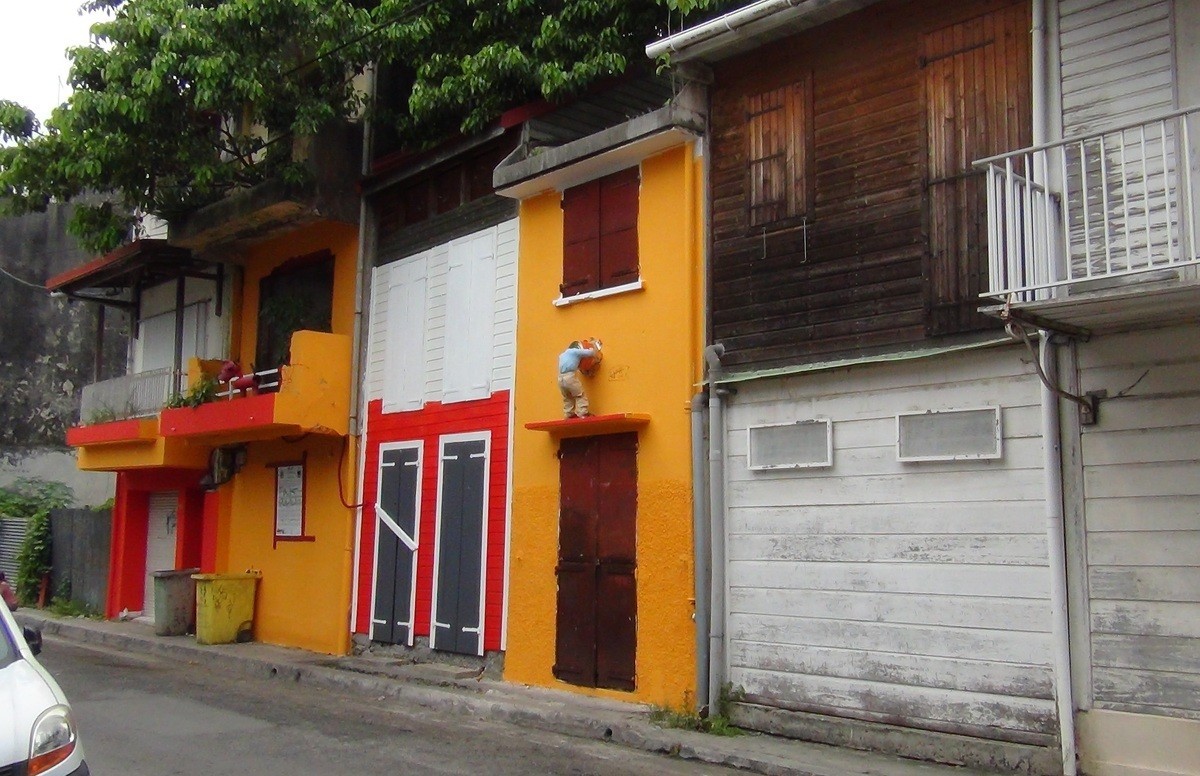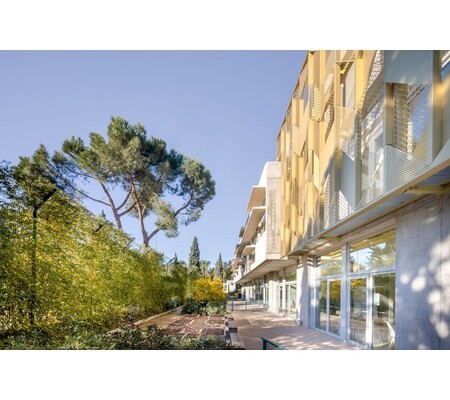PLI BEL LARI - a participatory urban stimulation operation
Last modified by the author on 10/03/2023 - 14:45
- Address 1 - street : 17 rue Victor Hugo 97110 POINTE A PITRE, France
- Population : 1 500 hab
- Starting year of the project : 2014
- Delivery year of the project : 2024
-
7 ha -
500 000 €
This project won the Infrastructure User’s Choice of the Green Solutions Awards France 2022-2023.
PLI BEL LARI, is an urban MAKEOVER experience
Since March 2014, the Atelier ODYSSEE association has been developing the “PLI BEL LARI” project; concerted approach to the aesthetic and social improvement of the popular district of Vatable (Pointe à Pitre) based on 3 pillars:
- Beautification of neighborhood homes
- The artistic or agricultural enhancement of urban neglect (frescoes, shared gardens, etc.)
- Urban entertainment (cultural and festive events, markets, etc.)
Initiated by the Atelier Odyssée, a neighborhood association dedicated to art and creation, in collaboration with a group of residents, the PLI BEL LARI operation has gradually benefited from the commitment of other actors (from other residents of the district, local artists, shopkeepers, volunteer residents from other cities) driven by the common desire to transform this district described as ''difficult'' and to act for its social, economic and cultural development. In nine years, the Vatable district has been transformed: improvement of the image, the living environment and the attractiveness of the sector, enhancement of Guadeloupe's heritage, reappropriation of green spaces, development of new businesses.
Pli Bel Lari aims to be an experience of participatory local development where everyone has their role to play. Anchored in the realities of the inhabitants and built by themselves from collective issues, this project was conducted from an endogenous and ascending logic. The meaning of development has not been defined “from above”, by external programs, it basically comes from the actors who compose it and from the synergy of their experiences, knowledge and expertise.
This concept also tends to inspire other territories as well as other districts and other cities of Guadeloupe today call on the actors of Pli Bel Lari, recognized in the expertise that they have built up empirically. Pli Bel Lari is presented today as "a method of life and mutual aid to bring the city back to life".
The challenges :
- Make the ecological transition desirable in order to bring as many people as possible into it
- Reconciling citizenship and positive and lasting impact
- Large-scale deployment of an experiment carried out on a neighborhood scale
This project aims, through a voluntary, responsible and committed approach of citizens to improve the living environment of their neighborhood through the development of spacesrevegetated in abandoned areas. This revegetation action contributes to calming the urban heat felt in the streets of the district by the inhabitants and visitors and to stimulate a positive social dynamic.
These abandoned spaces (abandoned houses, urban wasteland, etc.) have been transformed into several gardens, including a 250m² vegetable garden in which different varieties of crops have been planted (vegetables, fruits, flowers, PPAM, peanuts, etc.). The maintenance of this plot is managed by the members of the association who invite the inhabitants of the district to come and regularly harvest the production of the gardens.
In these gardens and green spaces, activities are organized to raise awareness among the inhabitants of the district of the challenges of the 21st century (global warming, energy, food, etc.).
The observed effects of PLI BEL LARI
- Initiation and sensitization of the youngest to civic involvement
- Urban stimulation & economic revitalization
- Positive image & social appeasement
- Food self-sufficiency & preservation of biodiversity
- Solidarity & urban conviviality
- Creation of places of freshness
- Transmission of knowledge & intergenerational link
- Environmental quality
- Autonomous management of the living environment
Useful lessons for other territories / replicability
Key success factors / why this action is exemplary
Innovative and specific nature of the project:
- a citizens' initiative accompanied by an expert architect-urban planner;
- a strong conviction and motivation of the citizens involved in the project;
- particular attention was paid to the aesthetics of the project.
The essential condition for such an operation to be successful is that the prescribers are also the beneficiaries. The role of the community must be that of facilitator and companion.
Points of vigilance / good conditions for success
- Financially, it is an operation that requires funds (start-up, support, etc.);
- A good relationship between the public authorities and the association is essential in order to facilitate the progress of the project (development, maintenance of roads, public spaces); it is also an asset if the local authority plays the role of guide and facilitator (management of bottlenecks, hiring, work sites on public roads, etc.);
- This operation requires bringing together several skills: architectural, landscaping, management, finance, urban planner, management, organization, etc.
- Good management of owners who make the sites available is important; Too often suspicious, they must be reassured by obtaining a temporary occupation permit (TOP) with a flexible land recovery clause. In return, the owner must be guaranteed the maintenance of his property and ensure that there are no squats and damage;
- Clearly define the management of the premises: people in charge, storage space, water management.
It's impossible, said the Pride. It's risky, says the Experiment. There is no way out, says reason. Let's do it, whispers the Heart.
Programme
- Public spaces
- Green spaces
- Others
Project progress
- Operational phase
Key points
- Quality of life
- Economic development
- Biodiversity
Approaches used
- Ecodistrict national label
More info
https://www.solidarum.org/vivre-ensemble/pli-bel-lari-redonner-couleurs-et-fierte-au-quartierPhoto credit
Atelier Odyssée
Type of territory
The city of Pointe-à-Pitre is located in the Caribbean island of Guadeloupe, a French island in the outermost region of the Caribbean. The city, built on swamps, has gained ground over the sea. It is a low city located on the edge of a mangrove.
Its central position in the archipelago and its sheltered port allowed it to develop and to become, until the early 1980s, the main economic and commercial center of the Guadeloupe archipelago.
Constrained in its development by the small size of its territory (barely 2.66 km²), Pointe-à-Pitre is the smallest urban municipality of the French outermost regions and has the highest population density.
In Pointe-à-Pitre, and generally in Guadeloupe, the effects of climate change are already visible:
- Increased intensity of severe weather events, such as hurricanes
- Increase in major floods
Its profile very exposed to natural risks combined with its small size obliges it to rebuild on itself and to consolidate.
The natural expansion of the city was made for the benefit of neighboring municipalities, in urban areas on the outskirts of the city.
The gradual installation of new urban polarizations, particularly in the central agglomeration but also on its outskirts, has reshaped the territorial balance. In particular, they reoriented demographic and economic flows, strongly affecting the urban vitality of Pointe-à-Pitre.
However, Pointe-à-Pitre remains an undeniable place of convergence. The history of its development has made it a remarkable source of urban vitality, the content of which has abundantly nourished the identity resources of the Guadeloupe archipelago. The city retains a persistent centrifugal force.
The intensity of population flows towards the city center of Pointe-à-Pitre is still alive, fueled by numerous structural and infra-structural assets capable of restoring and consolidating its historical stature as a strategic lever for the territorial dynamics generated in the Guadeloupe archipelago.
In this context, the city of Pointe-à-Pitre is in a transitional phase of its development.
This situation requires a strategic repositioning integrated in a territorial coherence which must be considered beyond the municipal limits, but on the larger scale of the urban area. This will allow it to project itself into a future more fertile in development opportunities with renewed visibility and sustained and lasting attractiveness.
Climate zone
[Af] Tropical Wet. No dry season.
Project holder
Project management
- Beautification of neighborhood homes
- The artistic or agricultural enhancement of urban neglect (frescoes, shared gardens, etc.)
- Urban entertainment (cultural and festive events, markets etc.)
- The rehabilitation and embellishment of some fifty houses,
- The creation of 5 urban gardens including 1 Creole garden on abandoned plots,
- The launch of projects (rue des Arts, reading hut, support for an alternative supermarket, etc.)
- Institutional, State, Region, Department and Cap Excellence (subsidies, participation in the Citizen Council, etc.)
- Sponsors (a large paint distributor has accompanied the association almost since their beginnings)
- A network of plural skills at the service of the operation (legal, administrative, architectural, etc.)
- Local and international volunteers won over by the approach
- Those nostalgic for the bourgeois era of some of these neighborhoods
- A “bobo” population conquered by the popular charm of the Vatable and other Laugier Funds
- Optimization of financial support for local authorities (volume, administrative responsiveness) which would promote, through hiring, the progress of construction sites or even the opening of new ones
- Complementarity between the actions of the association and those of the public authorities (exercise of police power or maintenance of roads and public spaces)
- Extension of this approach to other neighborhoods and other municipalities
- Resolution of joint ownership issues which tends to delay or bog down the implementation of operations
Project stakeholders
ADELAIDE
Other
Project focus
Steering - Scheduling - Coordination
Planning
atelier.odyssee97[a]gmail.com
SOLUTIONS
- Negative yesterday, or attractive today; it is necessary to distinguish between the perception of the place and its reality. Long known for its flaws as a flood-prone and unhealthy site, the VATABLE district, through its neighborhood life, perfectly illustrates this point. A postulate which recalls the work of a Sébastian ROCHÉ on the "feeling of insecurity" or of a Marc GUERRIEN on the bandas of Mexico City, comparable in various points (outfits, codes, activities...) to the Pointois gangs and singularly from Vatable Street.
- Citizen participation
- Promotion of cultural/ historical identity
A method: composing a mosaic with the sensitive diagnosis in the central motif
For Atelier ODYSSEE, territories suffer less from a lack of studies (ABS, OPAH, SDDE, PLH, ANRU studies, donor data, etc.), than from a social and sociological urban approach combining consultation with consideration of residents. Indeed, the accumulation of “frozen” data can dilute the efficiency of their application in a field that is constantly changing.
Based on what already exists, the volunteers of the Workshop survey the field in order to produce inventories allowing the identification of opportunities (hollow teeth, squats, etc.) and the production of "sensitive" diagnoses.
The experiences of Sylvie ADELAIDE, urban architect, active member of Pli Bel Lari, on urban renewal, convinced her of the imperative need to favor the preservation of human ties and the maintenance of a feeling of belonging to the approaches bureaucratic.
More than figures, she speaks to us of “reestablishment of the spirit of good neighbourliness”, of possibilities for the Gran Mouns to supervise the children as in the lakou of yesteryear dear to a JP GIORDANI or a Marc JALET.
“ To shave the human link, it is to put in difficulty a system which makes that people can evolve to envisage themselves, to project themselves, to realize themselves and to accomplish themselves ”. And how not to evoke, here, this woman who during a public meeting of urban renewal asked: “ Am I going to move near my neighbour? ". A wish which in the end, far from being granted, will experience a disastrous outcome...
A credo: respect (and associate) people so that they respect you (and appreciate you)
The philosophy carried by the Atelier Odyssée revisits the specifically hygienist or security approaches in terms of urban renewal based on the following precepts:
The association being located in the heart of an area within which different types of trafficking take place (narcotics, prostitution, etc.); it was important to establish, following the example of what the town planner Bruno CARRER tried to initiate within the framework of the GIP of the City of Fort de France, a different relationship with the informal sector. The Atelier thus dialogues with everyone, from the dean, witness to the bourgeois impregnation of the past, to the urban legend Big Jo . A dialogue that goes as far as the adoption of common codes, such as the territorial limits of the Atelier (a post and specific graffiti), respected by “the street” and vice versa.
Social diversity
Neighborhood life and convivial spaces: the developments carried out and more particularly the embellishment operations have made the neighborhood more attractive. Events, meetings and workshops are organized every week in these new living spaces that bring "living together" up to date?
Local development
Economic attractiveness of the territory: Pli bel Lari has changed the image of the district; now, the places have become trendy and attract many actors:
- Artists who produce frescoes in the context of events (exhibitions, clips, shootings, reports);
- Researchers & academics conducted interviews to understand social phenomena;
- Each year, more than 1,200 tourists come to discover the initiative and discuss with the inhabitants.
Biodiversity and natural areas
Create a space of freshness
The creation of gardens and vegetable gardens in neglected areas has made it possible to reduce concrete surfaces, increase vegetated surfaces and therefore bring more freshness to the inhabitants of the district. This revegetation also plays on the biodiversity of the district, since its establishment, the inhabitants of the district find the fauna and flora that have disappeared (butterflies, ladybugs, bees, etc.).
A sustainable diet
The vegetable garden makes it possible to produce a varied and local food for the inhabitants of the district. On a surface of 250m², there are as many vegetables (salad, tomatoes, peppers, cives, okra, mint), fruits (apples, cinnamon, guavas, strawberries, bananas, sugar cane, cherries), flowers (flowers ornamental flowers, cut flowers), PPAM (lemongrass, doliprane, atoumo, thousand flowers, semen)… Maintenance is managed by the members of the association but the plantations and harvests also benefit the inhabitants of the district. In addition to its nourishing function, this space is also a place to raise awareness of the challenges of tomorrow (food, agriculture, gardening, waste management, health, local, nature, etc.).
Reasons for participating in the competition(s)
Nous souhaitons à travers ce concours "Green Solutions Awards 2022-2023" d’une part avoir l’opportunité de contribuer à la construction d'un avenir durable , d’autre part c’est également l’occasion de mettre en avant l’expérience menée avec l’opération PLI BEL LARI ainsi que d’échanger avec d’autres experts dans le domaine de l’éco aménagement. Et enfin, participer à ce concourt nous permettra de gagner en visibilité, l’objectif étant d’inviter à réfléchir sur une autre façon d’appréhender notre cadre de vie et l'espace public.
- Le projet a été remarqué à travers de nombreuses distinctions et prix (concours l’Ordinaire, auditionné par l’Assemblée nationale, concours Realiz, élue association de l’année par France Antilles….)
- Il a également attiré l’attention de nombreux médias : télé locale, nationale, internationale, presse écrite, visites…




